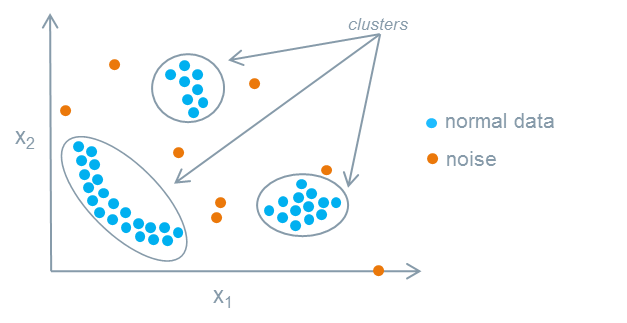
파이썬 모듈 - Pyod 사용해보기
2020, Nov 10
Pyod 사용해보기¶
Table of Contents
PyOD is a comprehensive and scalable Python toolkit for detecting outlying objects in multivariate data. This exciting yet challenging field is commonly referred as Outlier Detection or Anomaly Detection.
아웃라이어나 아노말리(이상치) 탐지를 위해 만들어진 모듈
201110 기준 Numpy==1.19.4 에서 에러남, Numpy==
1.19.3버젼 에서 실행됨
모듈 불러오기¶
In [1]:
from pyod.utils.example import visualize
from pyod.utils.data import evaluate_print
from pyod.utils.data import generate_data
from pyod.models.knn import KNN
In [2]:
contamination = 0.1 # percentage of outliers
n_train = 200 # number of training points
n_test = 100 # number of testing points
데이터 생성¶
In [3]:
# Generate sample data
X_train, y_train, X_test, y_test = \
generate_data(n_train=n_train,
n_test=n_test,
n_features=2,
contamination=contamination,
random_state=42)
In [4]:
X_train.shape, y_train.shape
Out[4]:
In [5]:
X_test.shape, y_test.shape
Out[5]:
모델 피팅¶
In [6]:
clf_name = 'KNN'
clf = KNN()
clf.fit(X_train)
Out[6]:
In [7]:
# 예측된 결과
clf.labels_
Out[7]:
Evaluation¶
In [8]:
y_train_pred = clf.labels_
y_train_scores = clf.decision_scores_
In [9]:
y_test_pred = clf.predict(X_test)
y_test_scores = clf.decision_function(X_test)
In [10]:
print("On Training Data:")
evaluate_print(clf_name, y_train, y_train_scores)
print("\nOn Test Data:")
evaluate_print(clf_name, y_test, y_test_scores)
시각화¶
In [11]:
# visualize the results
visualize(clf_name, X_train, y_train, X_test, y_test, y_train_pred,
y_test_pred, show_figure=True, save_figure=True)